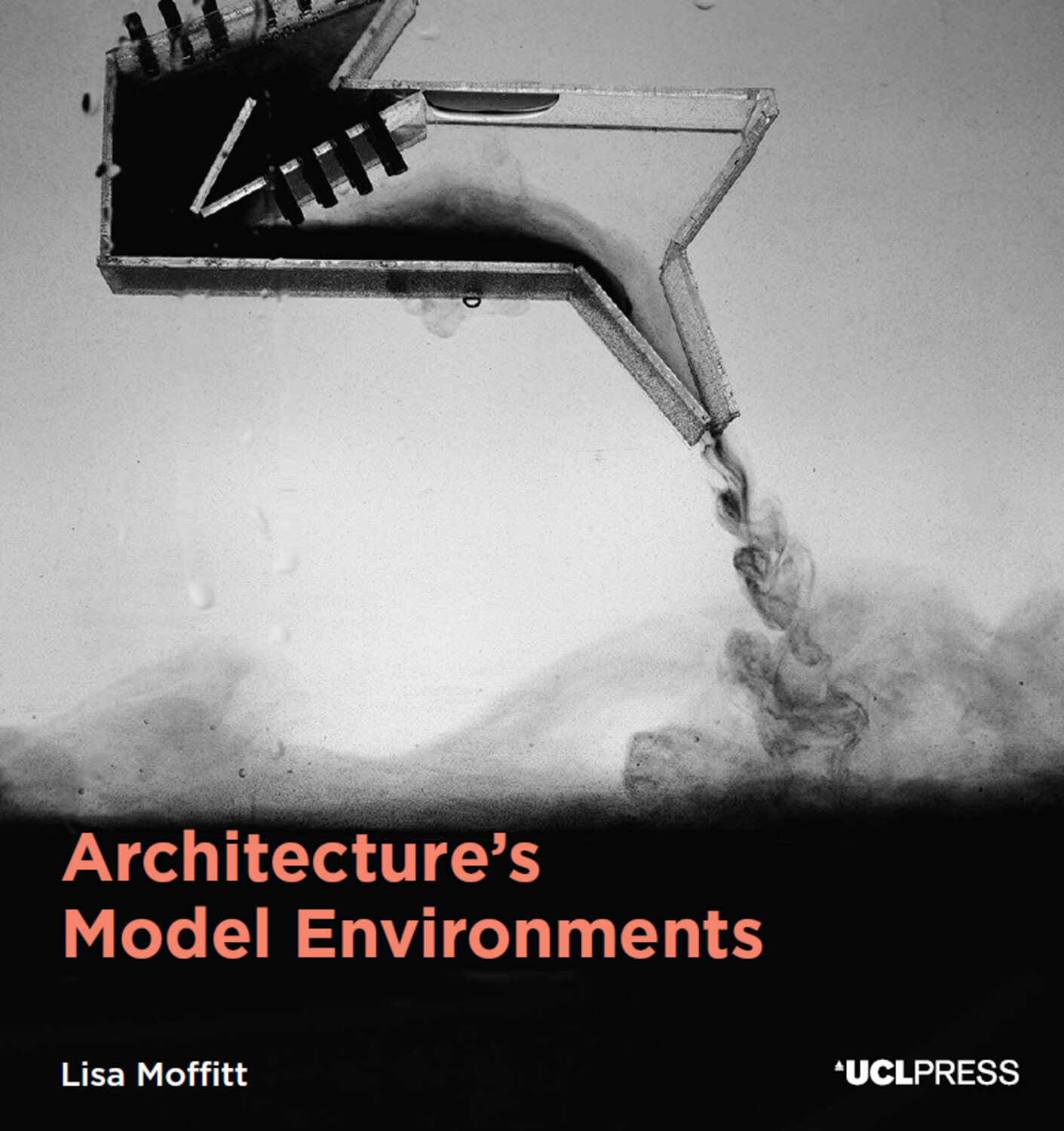Architecture’s Model Environments (UCL Press, 2023)

Architecture’s Model Environments, UCL Press Design Research in Architecture Series
Series Editors: Jonathan Hill, Murray Fraser, Lesley Lokko
ISBNs: 9781800084087 (Open Access PDF), 9781800084094 (Paperback)
Open Access PDF: uclpress.co.uk/ModelEnvirons
Seen through the distilling lens of the architectural model, Architecture’s Model Environments is a novel and far-reaching exploration of the many dialogues buildings have with their environmental surroundings. Expanding on histories of building technology, the book sheds new light on how physical models conventionally understood as engineering experimentation devices enable architectural design speculation.
The book begins with a catalogue of ten original model prototypes – of wind tunnels, water tables and filling boxes – and is the first of its kind to establish an architectural approach to fabricating such environmental models. Subsequent chapters feature three precedent models that have been largely overlooked within the wider oeuvres of their authors: French polymath Étienne-Jules Marey’s 1900-2 wind tunnels, Hungarian-American architects Victor and Aladár Olgyay’s 1955-63 thermoheliodon, and Scottish chemist and building ventilation expert David Boswell ‘The Ventilator’ Reid’s 1844 test tube convection experiments.
Moving between historic moments and the present day, between case studies and original prototypes, the book reveals the potent ability for models, as both physical artefacts and mental ideals, to reflect prevailing cultural views about the world and to even reshape those views. Fundamentally, Architecture’s Model Environments illustrates how environmental models reveal design insights across scales from the seam (that leaks) to the body (that feels) to the building (that mediates) to the world (that immerses)..